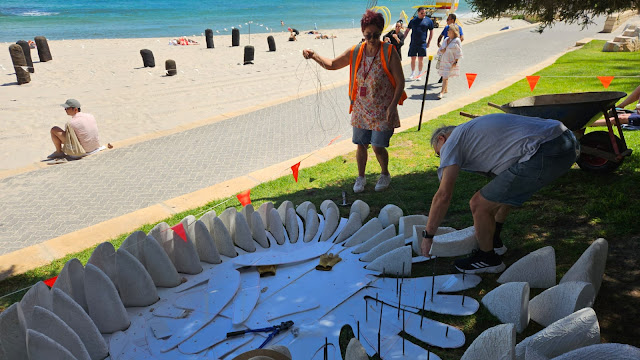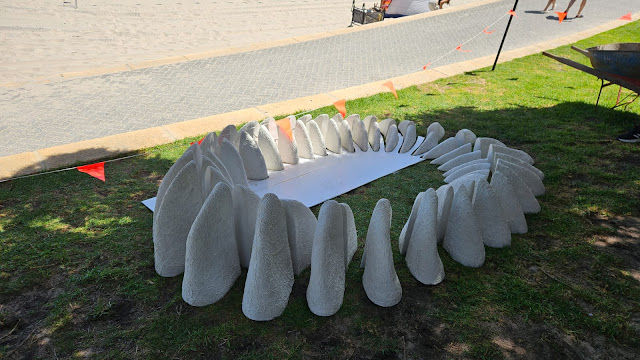Andrea Vinkovic ceramics
A beginner’s guide to constructing the universe-The mathematical archetypes of nature, art and science, states: “In ancient Greece the advanced students ... who were engaged in deep studies of natural science and self-understanding where called mathematekoi, “those who studied all”. The word mathema signified “learning in general, to be aware, to awaken”. If there is such a thing as mathematekoi ( a curious one) using clay as a medium...I am one. I will start in 2012 with making of Gateway 21
Monday, 25 March 2024
Sunday, 24 March 2024
Instalation
There is still lots to do. As the pieces are drying and queuing up for the firing, I need to figure out the installation process. I want them to look like they are growing, so I don't want to put them on the plinth or a platform.
I need to fill each piece with aerated concrete, with provisions for the metal rods in place. Making sure that the rods are perpendicular to the ceramic.
I will also need to make another template of the whole piece, with holes for the rods marked.
And here we are, on the site at Cottesloe:

Friday, 22 March 2024
Surface
Surface and texture are created with porcelain at leather hard stage. This process is time sensitive; if the piece is too wet texture will run down, and if it is too dry it will flake off.
The work will not be glazed, it will stay porcelain white, fired to 1280 degrees, oxidation.
Tuesday, 19 March 2024
Forming
I am getting better at shaping the curve, which is subtly changing as pieces are getting shorter and wider.
Now that I am working "on an angle" rather than horizontal I am happier with the shape:
Monday, 18 March 2024
Construction
After cutting lots of paper and cardboard templates, finally I can start making. I am starting with the tallest piece as (I'm thinking) that one will be the biggest challenge:
My plan seems to be working well so far:
Sunday, 17 March 2024
Conception
How does a sculpture start? For me, it starts with the inner search, “brainstorming”, listening to the inner dialogue, rummaging through the thoughts, ideas, images… picking them up and examining them…. are they good, suitable, interesting, worthwhile, achievable…. what do I want to say and how do I want to say it…..
And slowly, from that soup of chaos a concept starts emerging.
It takes time.
This one started with the framing of the space; ellipses reminiscent of the galaxies:
Wednesday, 28 February 2024
The World Within, Sculpture By The Sea Cottesloe
Sculpture by the Sea is an amazing event. This year it celebrates
its 20th birthday at Cottesloe, Western Australia. It has an older
sister event at Bondi (check David Handley’s SxS story here).
Previously I have applied and participated in 5 SxS
exhibitions in Cottesloe and 2 in Bondi.
This year I had the honour to be invited to participate at
the big “20” at Cottesloe, and without that invitation this sculpture would not
exists, I would not push myself to and over the limits to transform the
intangible into the tangible.
If you are in Perth WA, come and see the exhibition. It has
an enormous creative energy and it nurtures and supports many local, national
and international creatives and artists. Not only the exhibiting artists, but
also the tour guides, educators, volunteers and site crew. Most of them are
artists themselves. See you soon at Cottesloe!


























